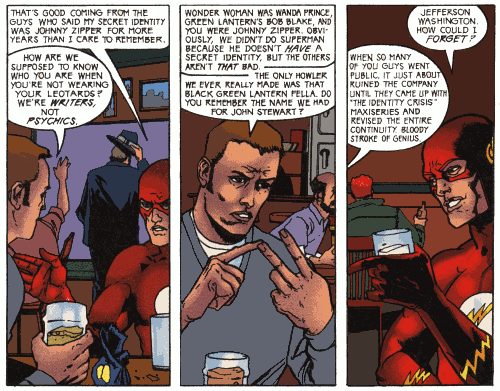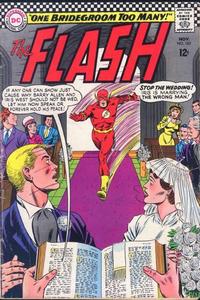With Identity Crisis just finished, and news breaking about DC Countdown, Crises are in the news in comics right now. That makes this exchange from The Flash 80-Page Giant #1 (1998) all the more interesting.
The setup: The DCU version of comic book writer Mark Millar is interviewing the Flash to get ideas for his next script. Apparently DC Comics exists in the DCU, but they publish stories about “real world” heroes. As you can see, they don’t know all the details—like their secret identities—and have to fill in the gaps themselves.

 Over the past few weeks I’ve been going through the Silver Age Flash series, cataloging character appearances. I’m almost done – only 25 issues left – but it reminded me of something:
Over the past few weeks I’ve been going through the Silver Age Flash series, cataloging character appearances. I’m almost done – only 25 issues left – but it reminded me of something: